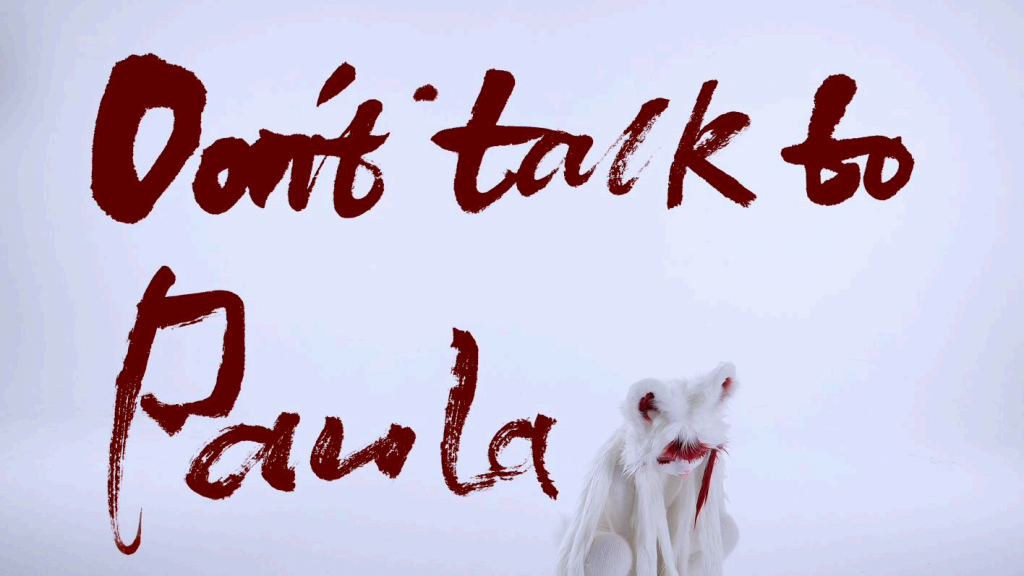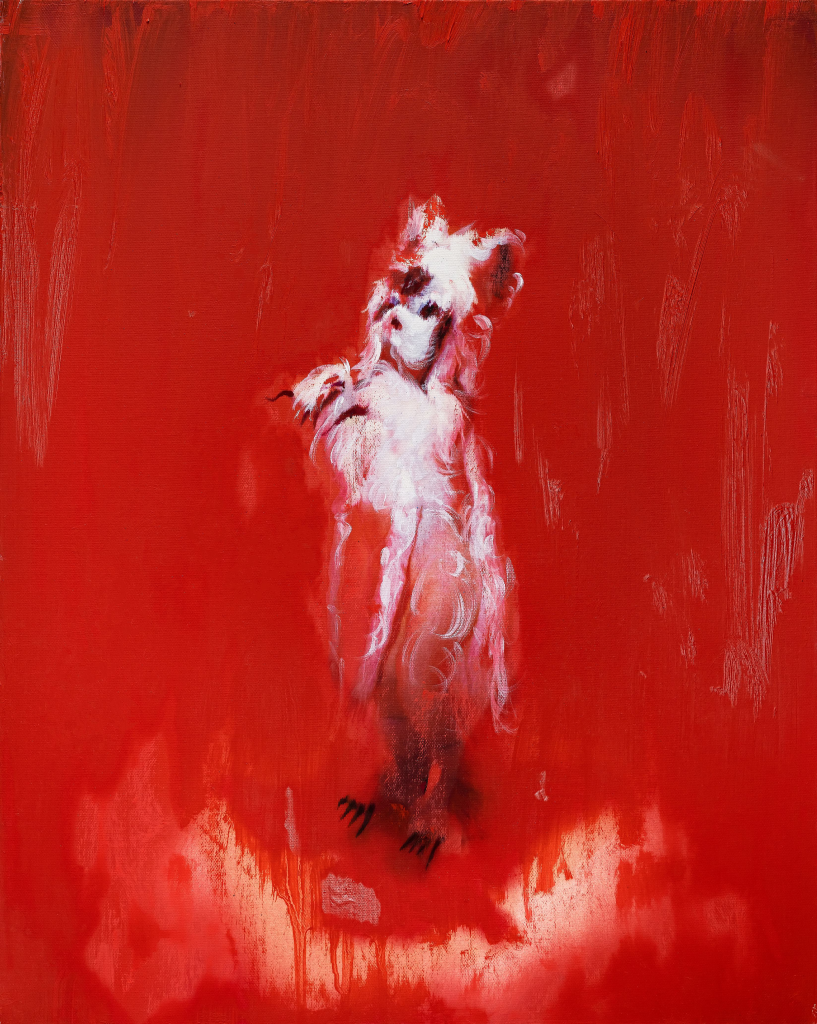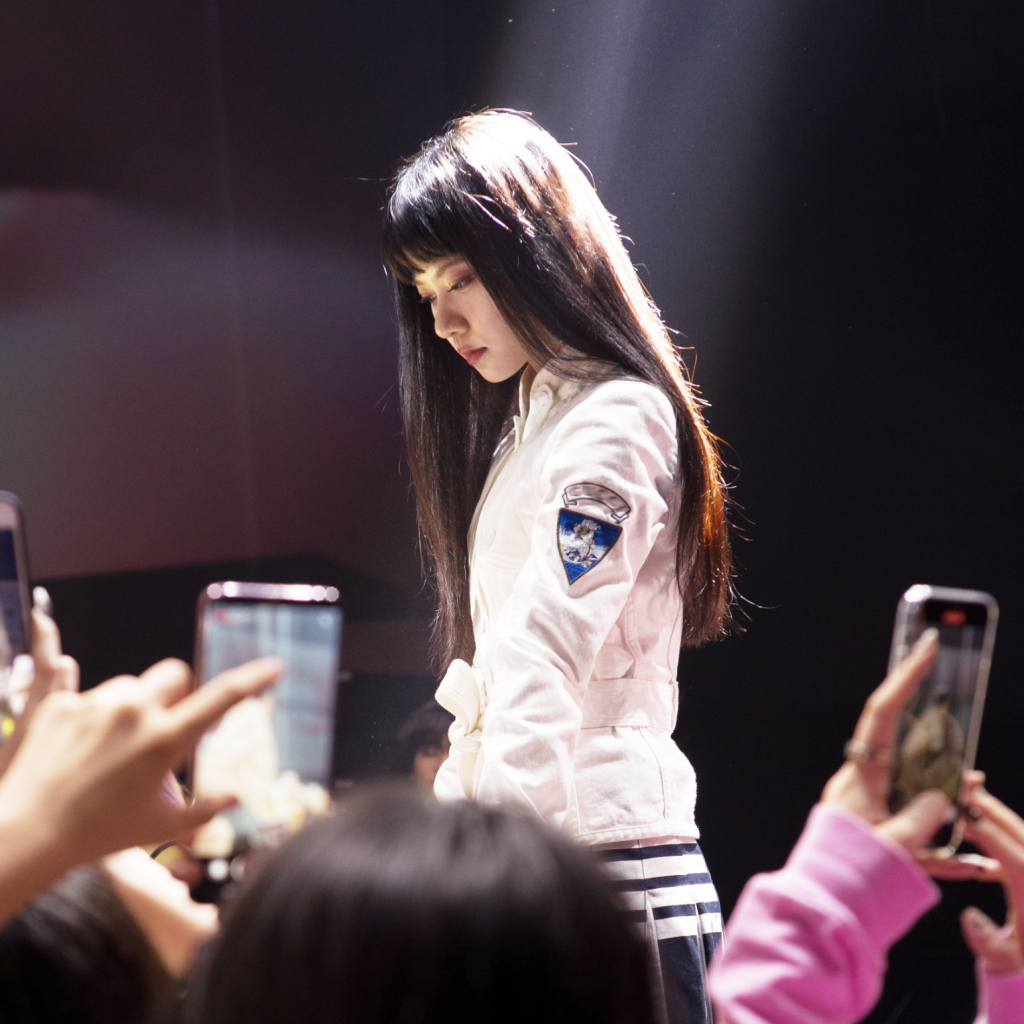
Longlati is pleased to present Bingqing Dong (b. 1994)’s experimental live creation project Extra Episode, opening on 11 November 2025, running for two weeks (Tuesday–Saturday, 3 PM – 4 PM). Bridging video, painting, and live creation, the project unfolds through multiple narrative threads as a pre-narrative strategy for the artist’s forthcoming stage and moving-image practices. Centred on the artist’s in-progress large-scale storyboard paintings, the work is conceived in dialogue with her preceding video work Don’t Talk to Paula (2024). With an intense yet romantic visual language, Extra Episode transforms the private gesture of painting into a performative act shared with the public.

Bingqing Dong, Don’t Talk to Paula, 2024, single-channel video, 8 min 41 sec. Courtesy of the artist
Don’t Talk to Paula can be regarded as the first chapter in the artist’s ongoing trajectory. Drawing upon her personal experiences, Dong embodies a furry character named Paula, who enters into a tense confrontation with a digitally rendered “human figure.” In her earlier video, the mechanical tapping of human fingers conducts Paula’s gestures, unveiling a fragile yet rigid web of relations between the subject and the object, autonomy and structural imperative. Beneath the measured rhythm of control runs an invisible current of power—where the body, scripted by the other, performs its own containment; where desire is coded through digital command, and the ordinary pulse of life drifts into the circuitry of technological rule.
The final rendition of video does not serve as a conclusive endpoint; rather, it gestures toward another image still in the process of becoming. By folding back into painting, Dong’s gestures leave behind traces where emotion thickens into pigment, and imagery trembles across the canvas. Within the video, the reversal of hierarchy between the dominant and the subjugated, the repressed subject’s counter-infiltration into the so-called “rational” order, and the shifting of identities between the unseen roles—all bring the artist’s core concerns to the surface. There exists neither a pure canvas nor a pure body, but only a Kampf um Leben und Tod—a struggle to the death—unfolding within their entanglement. This bidirectional “overflow” extends beyond the formal boundaries of painting, reaching instead toward a psychic intensity born from the friction between soul and canvas.
Through Dong’s framing, the “human figure” assumes a strangely animalistic presence, while Paula, the furry, emerges with an unexpected sense of innocence. Dong deliberately blurs the boundary between the two, granting the human character white eyelashes and sharp claws reminiscent of the furry persona—traces of their mutual transformation. The crisp shirt, manicured nails, and fluttering lashes serve as symbolic emblems of structural discipline, yet they point less to an elevation of “humanity” than to the ephemeral desires and instincts suppressed beneath the veneer of “civilisation.”

Bingqing Dong, Love, 2024, oil on canvas, 62.5 × 50 cm. Courtesy of the artist
The “human figure” and Paula are by no means inherently opposed; instead, they enact the artist’s internal struggle of dual self-consciousness. What Dong presents is a contest between herself and the object of desire. To the viewer, the scene reads as the artist’s solitary creation; yet through the miniature hexagonal window, hierarchies of dominance and submission, resistance and entanglement, and the interplay of innocence and veiled emotion play out within her. The video within the window subtly foregrounds this psychological process, transforming the studio into a tangible stage of the psyche and deepening the spiritual dimension of painting.
The figure of dominance collapses in convulsion, and the scene shifts from turbulent blood-red to a pristine, silent white—a tremor that delivers no lasting serenity. The video concludes with Paula’s uncanny yet liberated movements, extending the struggle into an endless loop and further revealing the artist’s meditation on cyclical processes of becoming. As Dong notes, Extra Episode is both an expansion of the work’s formal possibilities and an externalization of her inner solitude and yearning for acknowledgment. Dong is less concerned with outcomes. She focuses on the process through which the soul is compressed and articulated. This emergence unfolds beyond discursive frameworks. The state of painting hangs between her gestures and the intensity of her emotions. It materializes in a presence that transcends the flatness of the canvas. From its first emergence, the image penetrates the canvas through pigment and repeated overpainting, establishing a resonant mechanism that exists beyond language.
About the Artist

Bingqing Dong. Courtesy the artist
Bingqing Dong (b. 1994, Haiyan, China) holds a BA in art history and theory and an MA in ancient art studies from the China Academy of Art. She studied under Fan Jingzhong and Wan Muchun, receiving rigorous academic training in iconography, the Chinese literati painting tradition, and media theory, all oriented toward the study of visual culture.
Dong’s practice bridging video, painting, installation, and live performance, investigating themes of human nature, ego, the impermanence of life, and eternity. Her individual experiences reconfigure her humanistic education through a postmodern, deconstructive lens, bringing classical and avant-garde extremes into dialogue and yielding a visual style that is simultaneously fierce and romantically charged.
In recent years, her work has been exhibited at UCCA Lab, Beijing; The Pool by X Museum, Shanghai; Tank Shanghai; HOW Museum; CCI Fabrika, Moscow; Xiangshan Art Center, Hangzhou; and the Armory Show, New York, among others. She has also created brand visuals for Maison Margiela (France) and Forbitches (Italy), with her digitally rendered virtual personas featured by Vogue (USA). She has long been engaged in live music performances, creating stage installations and visual outputs that merge sound and space. Her collaborations span underground club scenes, musicians’ tours, and large-scale concerts, often working directly with artists and record labels. Treating these engagements as a form of social practice, she seeks to uncover the deeper structures and spiritual undercurrents that lie beneath the surface of popular culture and youth subcultures.






